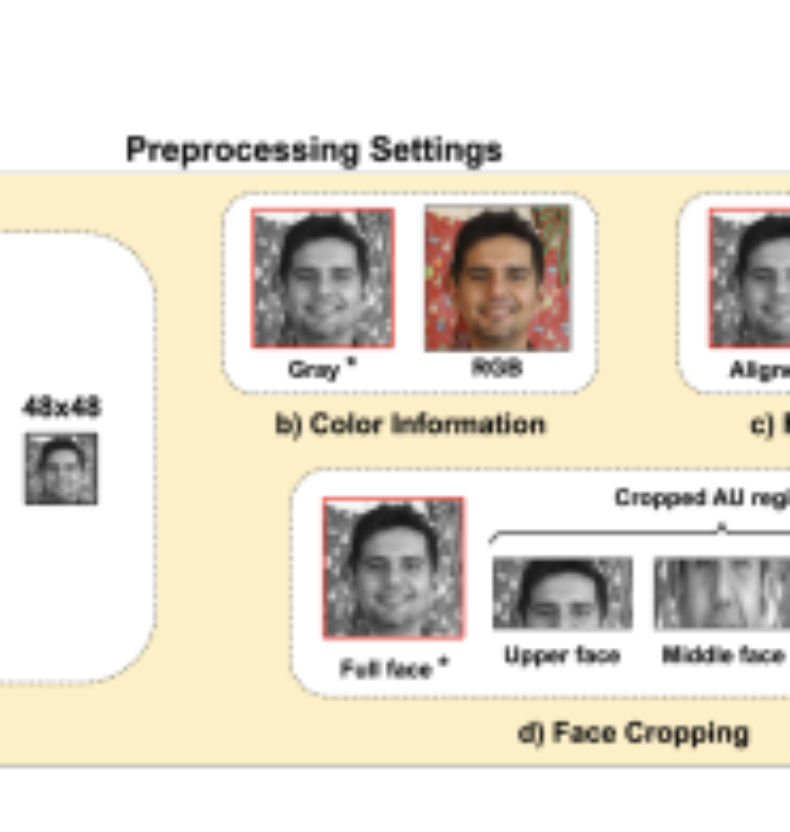
Abstract
In this paper, we investigate the impact of some of the commonly used settings for (a) preprocessing face images, and (b) classification and training, on Action Unit (AU) detection performance and complexity. We use in our investigation a large-scale dataset, consisting of ~55K videos collected in the wild for participants watching commercial ads. The preprocessing settings include scaling the face to a fixed resolution, changing the color information (RGB to gray-scale), aligning the face, and cropping AU regions, while the classification and training settings include the kind of classifier (multi-label vs. binary) and the amount of data used for training models. To the best of our knowledge, no work had investigated the effect of those settings on AU detection. In our analysis we use CNNs as our baseline classification model.
Authors
Mina Bishay; Ahmed Ghoneim; Mohamed Ashraf; Mohammad Mavadati
Publication available on IEEE Explore.